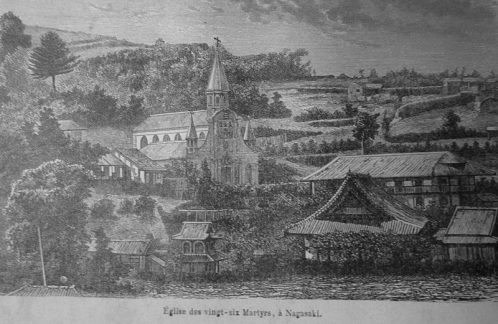A generous servant of God, named Damian, had sacrificed his life for the faith in 1622. All his property having been confiscated, the house where his mother Isabella, his wife Beatrice, and his children dwelt was assigned to them as their prison. Guards were constantly watching over them, and did not cease to importune them to leave the Christian religion; they, however, always answered that they desired to die for Jesus Christ. Finally, after two years of captivity, the governor condemned all of them to be put to death, with the exception of Isabella; yet this venerable woman, aged seventy-four, having bitterly complained that she could not share the fate of her family, to satisfy her he ordered that she also should be executed. The grandmother, the mother, and the four children were then led from the house to the place of execution. A pagan wished to save the eldest of the two sons, named Paul, aged twelve years, and he kept him secreted; but the boy managed things so well that he was able to escape and follow the others. They were placed in a vessel, to be transported to the island of Nancaia, the place of execution. While on their journey they were joined by Mary, widow of Sucamota, who had been martyred with Damian; she was also led to death with her four sons. The two families embraced each other in a most cordial manner, and began to chant together the praises of God.
Beatrice was the first that was immolated. Paul followed her; he was already on his knees awaiting the fatal blow, when the executioner, seeing on his neck a kind of collar that was the ornament worn by the children of rank in Japan, ordered him to take it off. The boy arose at once and removed it; he then knelt down again, bent his neck while pronouncing the names of Jesus and Mary. John, his brother, nine years of age, seeing him stretched dead at his side, courageously fell on his knees, and was at once decapitated. There still remained two girls—Magdalen, aged thirteen, and Isabella, who was seven. The executioners seized little Isabella, and having thrown her on the body of her mother, killed her with three blows of the saber. Magdalen afterwards perished in the same way. Finally, Isabella, who had obtained permission to die last, in order, she said, to have the consolation to see her whole family pass happily from the earth to heaven, after she had contemplated, not without the greatest grief, the massacre of all those who were dear to her, was also beheaded, March 5, 1624. We may here see how far the noble Christian soul can go.
Rev. Eugene Grimm, ed. Victories of the Martyrs, vol. 9, The Complete Works of Saint Alphonsus de Ligouri (New York: Benzinger Brothers, 1888), 387–9.
Short Stories on Honor, Chivalry, and the World of Nobility—no. 752










